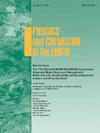Development in flood forecasting: A comprehensive review of complex and machine learning models
IF 3
3区 地球科学
Q2 GEOSCIENCES, MULTIDISCIPLINARY
引用次数: 0
Abstract
The usefulness of Machine learning (ML) and Artificial intelligence (AI) models in flood prediction is an important field that has recently attracted much attention. ML measures can increase the correctness and timeliness of flood forecasts, which is essential for reducing the damage that floods cause to property and human life. In the last 20 years, ML models have been more helpful to creating more precise and cost-effective prediction systems. Assessment of the ML models' resilience, accuracy, efficacy, and speed: this study reviews the literature on benchmarking ML models for flood prediction. Therefore, it is compared and contrasted many ML algorithms to assess their performance in short- and long-term flood prediction. The study investigates the applicability of each algorithm for different flood prediction scenarios. Furthermore, the work finds ways to enhance the flood prediction model. These trends include hybridization, data decomposition, and model ensemble using satellite-based impact analysis. These models and methods can increase the precision and dependability of flood prediction models, leading to more efficient flood control plans. It provides an extensive overview of different models used for flood prediction, their strengths, limitations, and performance compared with other models. The potential of ML models to minimize the damage associated with floods and reduce the loss of human life focus. Overall, this review article highlights the importance of ML models and methods for flood forecasting and gives functional visions into the deepest learning models and techniques for the correctness of models performance on the flood forecasting.
洪水预报的发展:复杂和机器学习模型的综合回顾
机器学习(ML)和人工智能(AI)模型在洪水预测中的作用是近年来备受关注的一个重要领域。ML措施可以提高洪水预报的准确性和及时性,这对于减少洪水对财产和生命造成的损失至关重要。在过去的20年里,机器学习模型更有助于创建更精确和更具成本效益的预测系统。评估ML模型的弹性、准确性、有效性和速度:本研究回顾了关于ML模型用于洪水预测的基准的文献。因此,比较和对比了许多ML算法,以评估它们在短期和长期洪水预测中的性能。研究了每种算法在不同洪水预测场景下的适用性。此外,本文还对洪水预测模型进行了改进。这些趋势包括杂交、数据分解和使用基于卫星的影响分析的模型集成。这些模型和方法可以提高洪水预测模型的精度和可靠性,从而制定更有效的防洪计划。它提供了用于洪水预测的不同模型的广泛概述,它们的优势,局限性,以及与其他模型相比的性能。ML模型最大限度地减少与洪水相关的损害并减少人类生命损失的潜力。总的来说,这篇综述文章强调了ML模型和方法在洪水预测中的重要性,并给出了深度学习模型和技术在洪水预测中模型性能正确性的功能愿景。
本文章由计算机程序翻译,如有差异,请以英文原文为准。
求助全文
约1分钟内获得全文
求助全文
来源期刊

Physics and Chemistry of the Earth
地学-地球科学综合
CiteScore
5.40
自引率
2.70%
发文量
176
审稿时长
31.6 weeks
期刊介绍:
Physics and Chemistry of the Earth is an international interdisciplinary journal for the rapid publication of collections of refereed communications in separate thematic issues, either stemming from scientific meetings, or, especially compiled for the occasion. There is no restriction on the length of articles published in the journal. Physics and Chemistry of the Earth incorporates the separate Parts A, B and C which existed until the end of 2001.
Please note: the Editors are unable to consider submissions that are not invited or linked to a thematic issue. Please do not submit unsolicited papers.
The journal covers the following subject areas:
-Solid Earth and Geodesy:
(geology, geochemistry, tectonophysics, seismology, volcanology, palaeomagnetism and rock magnetism, electromagnetism and potential fields, marine and environmental geosciences as well as geodesy).
-Hydrology, Oceans and Atmosphere:
(hydrology and water resources research, engineering and management, oceanography and oceanic chemistry, shelf, sea, lake and river sciences, meteorology and atmospheric sciences incl. chemistry as well as climatology and glaciology).
-Solar-Terrestrial and Planetary Science:
(solar, heliospheric and solar-planetary sciences, geology, geophysics and atmospheric sciences of planets, satellites and small bodies as well as cosmochemistry and exobiology).
 求助内容:
求助内容: 应助结果提醒方式:
应助结果提醒方式:


